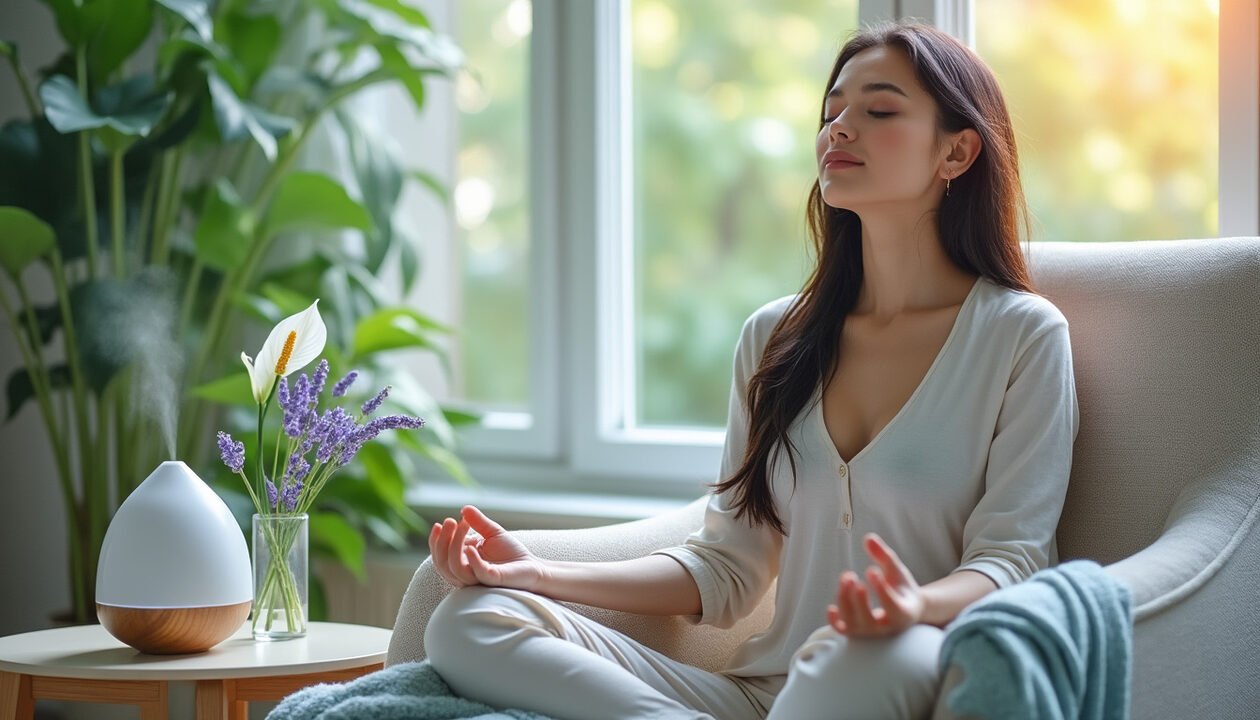In a world where stress and daily tensions continue to rise, the search for serenity becomes essential. Guided visualization emerges as a powerful technique to help everyone relax, eliminate anxiety, and promote a deep state of well-being. In fact, this method allows access to a mental space where stressful thoughts are set aside, giving way to soothing images and sensations. The benefits of this practice are numerous, from improving sleep quality to reducing anxiety symptoms. This article explores the different facets of guided visualization and how to integrate it into your daily life.
The science behind guided visualization
Guided visualization, also known as mental imagery, engages the five senses to induce deep relaxation. By focusing on positive images, you redirect your attention and calm your mind. In practice, this means imagining pleasant scenarios, such as a peaceful landscape, to live an immersive sensory experience. This technique has been studied and validated by numerous research studies, highlighting its positive effects on mental health. According to a 2022 study from Harvard University, participants who used guided visualization reported a significant decrease in their stress levels. By using this method, you can boost your self-confidence, combat phobias, and even relieve headaches.

The benefits of guided visualization
Adopting a practice of guided visualization offers multiple benefits. Several testimonials describe notable changes in their daily lives after adopting this technique. It allows not only to release muscle tension but also to free repressed emotions. Thus, individuals suffering from sleep disorders have questioned their habits, and several of them have regained restorative sleep.
Moreover, its effectiveness in stress management is well documented. Visualization creates a safe mental space, where negative thoughts are replaced by reassuring images. There are even simple visualization exercises that can easily be implemented to enjoy the immediate benefits of this practice.
How to effectively practice guided visualization
It is essential to create a conducive environment for guided visualization practice. Here are steps to follow to optimize your experience:
Select an appropriate location
Finding a quiet and comfortable place is fundamental. This can be at home, in a garden, or even inside a park. The chosen spot should feel safe and suitable for meditation. A relaxing ambiance, such as dim lighting or a few candles, can enhance your experience. To easily integrate visualization into your life, check this link on relaxation techniques.
Mental preparation
Before starting the practice, it is important to refocus. Taking a few moments to concentrate on your breathing helps calm the mind. Breathe slowly and deeply, letting go of any accumulated tension in your body. There are also apps and online videos that can effectively guide you.
Engage your senses
To enjoy the benefits of guided visualization, you must fully engage your senses. Clearly imagine every detail of the calming environment you have chosen. What smell is there? What texture do you feel under your fingers? How is the light illuminating this space? Every detail counts. This enhances immersion and contributes to effective relaxation.

Guided visualization for insomnia
Sleep disorders, especially insomnia, affect many people. The practice of guided visualization can prove useful in promoting falling asleep. By focusing the mind on positive images, we move away from anxious thoughts that prevent sleep. Visualization trains the brain to recognize relaxation signals, thus allowing a transition to sleep.
For individuals suffering from chronic insomnia, it is recommended to create a relaxation routine incorporating this technique. By learning to calm the mind before bedtime, it becomes easier to adopt a healthier lifestyle. A very interesting article on visualization for insomnia is available on this other site.
Practical visualization exercises
Exercise 1: Imagine a place where you feel perfectly safe. Visualize every detail. Do you feel calm? Take the time to explore this mental space.
Exercise 2: Practice visualization by incorporating elements of your everyday life. Imagine your perfect day, moments of happiness and serenity. This will help reinforce a positive attitude.
Exercise 3: To experience mindset changes, project yourself into a situation that makes you anxious. Visualize yourself succeeding with ease. This practice boosts your confidence and helps manage stress better.

The use of new technologies in guided visualization
With the advancement of modern technologies, it is now easier to access guided visualization resources. Mobile apps and meditation platforms offer daily sessions suitable for all levels. These tools facilitate regular practice, making visualization accessible and engaging.
However, it is important to use them wisely. These technologies should serve as a complement to other relaxation approaches, such as traditional meditation, without replacing professional follow-up for more complex cases.
Conclusion and recommended practices
Incorporating guided visualization into your daily routine can truly transform your mindset. Whether in moments of intense stress or simply to find a bit of calm, this technique offers you a powerful tool. With a little practice, you will be able to easily regain your serenity, even in the most demanding situations. Explore the resources available to you and discover what works best for you. Remember that the key is to practice regularly to fully experience the benefits.


